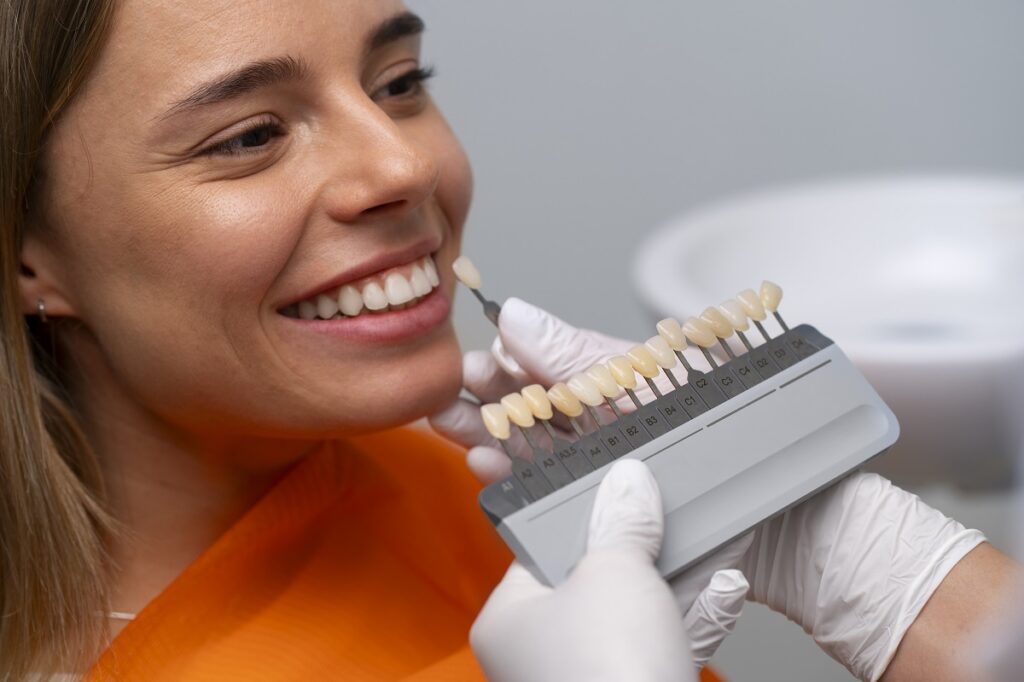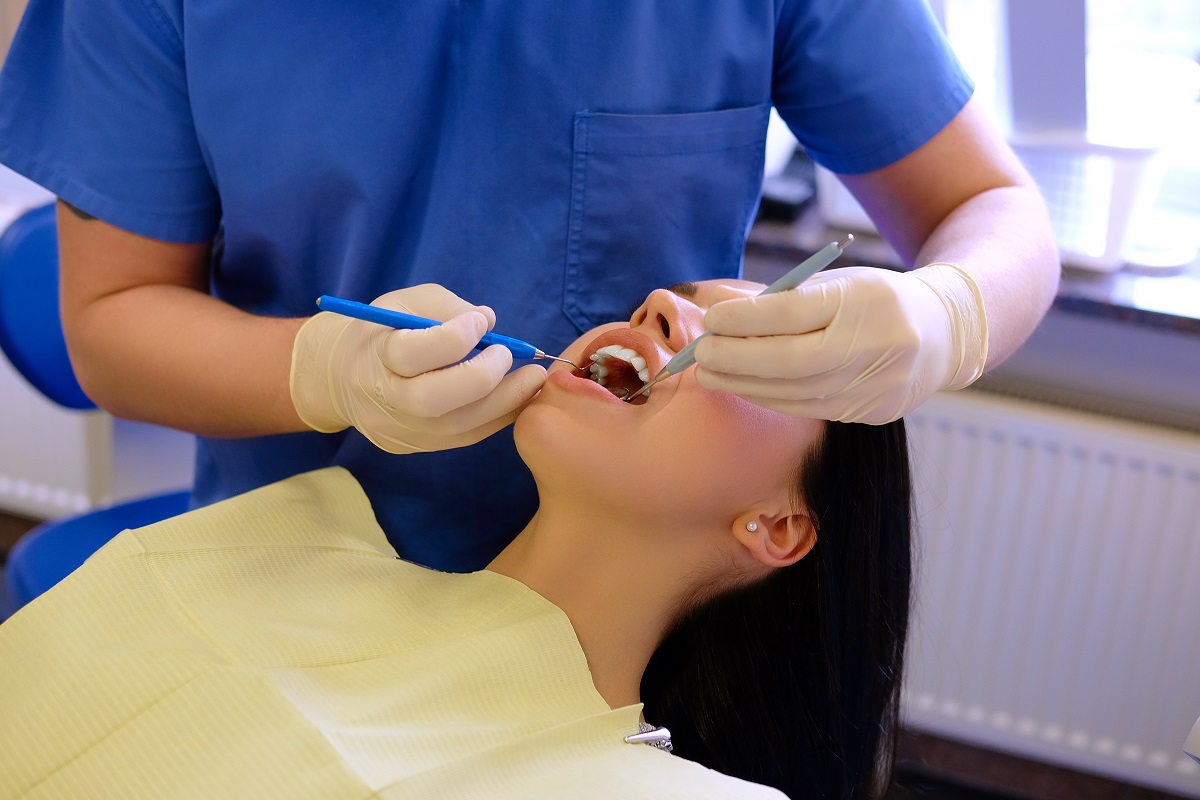Introduction
A perfect smile can significantly enhance one’s appearance and boost confidence. Porcelain Veneer’s have become a popular solution for those seeking to achieve a flawless smile. These thin, custom-made shells are designed to cover the front surface of teeth, providing an aesthetically pleasing and natural look. This article delves into the intricate science and artistry behind porcelain veneers, exploring their benefits, the procedural steps, and much more.
History and Development of Porcelain Veneers
Origins and Early Uses
Porcelain veneers have an interesting history that dates back to the early 20th century. Initially developed by Dr. Charles Pincus in the 1930s, these veneers were used to temporarily enhance the smiles of Hollywood actors during filming. The early versions were rudimentary and lacked the durability and natural appearance of modern veneers.
Evolution Over Time
Over the decades, advancements in dental materials and techniques have significantly improved the quality and effectiveness of porcelain veneers. The introduction of stronger bonding agents and high-quality porcelain materials has made veneers more durable and aesthetically pleasing.
Modern Advancements
Digital imaging and CAD/CAM (computer-aided design and computer-aided manufacturing) systems allow for precise customization, ensuring a perfect fit and natural look. These advancements have made porcelain veneers a leading choice in cosmetic dentistry.
Understanding Porcelain Veneers
What Are Porcelain Veneers?
Porcelain veneers are thin shells of medical-grade ceramic that are bonded to the front surfaces of teeth to enhance their appearance. They are custom-made for each patient, ensuring a precise fit and natural look.
How Do They Work?
Veneers work by covering up imperfections in teeth, such as discoloration, chips, or gaps. The process involves removing a small amount of enamel from the tooth’s surface to make room for the veneer, which is then bonded using a strong dental adhesive.
Types of Porcelain Veneers
There are several types of porcelain veneers, including:
- Traditional Veneers: Require the removal of a thin layer of enamel.
- No-Prep Veneers: Minimal or no enamel removal needed.
- Lumineers: A brand of ultra-thin veneers that require little to no tooth preparation.
Benefits of Porcelain Veneers
Aesthetic Improvements
Porcelain veneers offer significant aesthetic benefits. They can correct a variety of dental issues, including:
- Discoloration and staining
- Chipped or broken teeth
- Misaligned or uneven teeth
- Gaps between teeth
Functional Advantages
Beyond aesthetics, porcelain veneers also offer functional benefits. They can strengthen weak or worn teeth and improve bite alignment, contributing to overall oral health.
Longevity and Durability
With proper care, porcelain veneers can last between 10 to 15 years or even longer. They are resistant to staining and are more durable than composite veneers, making them a long-term investment in dental health and beauty.
The Science Behind Porcelain Veneers
Materials Used
Porcelain veneer’s are made from high-quality dental porcelain, which is chosen for its strength, durability, and ability to mimic the light-reflecting properties of natural teeth. This material is biocompatible, meaning it is safe for use in the human body.
Process of Fabrication
The fabrication of porcelain veneers involves several steps:
- Impression Taking: A mold of the patient’s teeth is taken to create a precise model.
- Design: Using CAD/CAM technology, the veneers are designed to match the shape and size of the patient’s natural teeth.
How They Bond with Teeth
The bonding process is critical to the success of porcelain veneers. A special adhesive is applied to the prepared tooth, and the veneer is placed on top. A curing light is used to harden the adhesive, creating a strong bond that secures the veneer in place.
Artistry in Porcelain Veneers
Role of Cosmetic Dentistry
The creation and placement of porcelain veneers require a high degree of skill and artistry. Cosmetic dentists must have a keen eye for detail and an understanding of facial aesthetics to ensure that the veneers complement the patient’s overall appearance.
Customization and Personalization
Each set of veneers is customized to match the patient’s unique dental structure and desired outcome. This personalization ensures that the veneers look natural and blend seamlessly with the surrounding teeth.
Achieving a Natural Look
Achieving a natural look with porcelain veneers involves careful consideration of color, shape, and size. The dentist works closely with the patient to select the right shade of porcelain and designs the veneer’s to match the natural contours of the teeth.
The Procedure: Step-by-Step Guide
Initial Consultation
The journey to getting porcelain veneers begins with an initial consultation. During this appointment, the dentist evaluates the patient’s dental health, discusses their goals, and explains the procedure in detail.
Preparation of Teeth
Before the veneers can be placed, the teeth must be prepared. This involves removing a small amount of enamel from the front surfaces of the teeth to create space for the veneers. This step ensures that the veneers sit flush with the surrounding teeth and look natural.
Fabrication of Veneers
Once the teeth are prepared, impressions are taken and sent to a dental lab where the veneers are custom-made. The fabrication process typically takes one to two weeks.
Placement and Bonding
When the custom veneers are ready, the dentist checks the fit and appearance before permanently bonding them to the teeth. The veneers are placed using a strong dental adhesive, and a curing light is used to harden the adhesive and secure the veneers in place.
Candidacy for Porcelain Veneers
Ideal Candidates
Ideal candidates for porcelain veneers are individuals with:
- Healthy gums and teeth
- Minor cosmetic dental issues
- Realistic expectations about the results
Conditions Suitable for Veneers
Porcelain veneers can address a variety of dental issues, including:
- Discoloration and staining that cannot be corrected with whitening
- Chipped or broken teeth
- Misaligned, uneven, or irregularly shaped teeth
- Gaps between teeth
When Veneers Are Not Recommended
Veneers may not be suitable for individuals with:
- Severe tooth decay or gum disease
- Weakened teeth due to large fillings
- Insufficient enamel on the tooth surface
- Bruxism (habitual teeth grinding)
Risks and Considerations
Potential Risks and Complications
While porcelain veneers are generally safe, there are potential risks and complications, including:
- Tooth sensitivity due to enamel removal
- Damage to the veneers, such as chipping or cracking
- Irreversible nature of the procedure
Factors to Consider Before Getting Veneers
Before getting veneers, patients should consider factors such as:
- The cost of the procedure
- The permanence of enamel removal
- The need for ongoing care and maintenance
Managing Expectations
It is essential for patients to have realistic expectations about the results of porcelain veneers. While they can significantly enhance the appearance of teeth, they are not a cure-all for all dental issues and require proper care to maintain their appearance and longevity.
Maintenance and Care of Porcelain Veneers
Daily Care Routine
Maintaining porcelain veneer‘s involves a consistent daily care routine, including:
- Brushing twice a day with a non-abrasive toothpaste
- Flossing daily to remove plaque and food particles
- Using an antiseptic mouthwash to reduce bacteria
Professional Check-Ups and Cleanings
Regular dental check-ups and professional cleanings are crucial for maintaining the health of the veneers and the surrounding teeth. Dentists can also check for any signs of damage and provide necessary repairs.
Avoiding Damage
To prevent damage to porcelain veneer’s, patients should:
- Avoid biting into hard objects, such as ice or hard candies
- Refrain from using teeth as tools to open packages
- Wear a mouthguard if they grind their teeth at night
Cost of Porcelain Veneers
Factors Influencing Cost
The cost of porcelain veneer’s can vary based on several factors, including:
- The number of veneers needed
- The complexity of the case
- The dentist’s experience and reputation
- Geographic location of the dental practice
Insurance and Financing Options
Porcelain veneers are typically considered a cosmetic procedure and are not covered by insurance. However, many dental practices offer financing options to help patients manage the cost.
Long-Term Investment
Despite the initial cost, porcelain veneers are a long-term investment in dental health and aesthetics. With proper care, they can provide a durable and lasting solution for enhancing the appearance of teeth.
Alternatives to Porcelain Veneers
Composite Veneers
Composite veneers are an alternative to porcelain veneers. While they are less expensive, they are also less durable and may require more frequent replacements.
Dental Bonding
Dental bonding involves applying a tooth-colored resin to the surface of the teeth to correct minor imperfections. It is a less invasive and more affordable option than veneers, but it does not offer the same level of durability or aesthetic quality.
Teeth Whitening
For patients looking to address discoloration, professional teeth whitening is a non-invasive alternative to veneers. While it cannot correct structural issues, it can significantly improve the appearance of stained or discolored teeth.
Real-Life Transformations
Case Studies
Several case studies highlight the transformative power of porcelain veneer’s. These stories showcase the dramatic improvements in patients’ smiles and the positive impact on their confidence and quality of life.
Before and After Photos
Before and after photos provide a visual representation of the changes that porcelain veneer’s can achieve. These images can help prospective patients understand the potential results of the procedure.
Testimonials from Patients
Patient testimonials offer personal insights into the experience of getting porcelain veneer’s. These stories often highlight the positive effects on self-esteem and overall satisfaction with the results.
Expert Insights on Porcelain Veneers
Quotes from Cosmetic Dentists
Leading cosmetic dentists provide valuable insights into the process and benefits of porcelain veneers. Their expertise helps demystify the procedure and reassure potential patients.
Expert Advice and Recommendations
Experts recommend thorough research and consultations with qualified cosmetic dentists to ensure the best possible outcome. They also emphasize the importance of realistic expectations and proper maintenance.
Future Trends in Veneer Technology
Advancements in veneer technology continue to evolve, with future trends focusing on even more durable materials and minimally invasive procedures. These innovations promise to enhance the patient experience and results further.
(FAQs):
How Long Do Porcelain Veneers Last?
With proper care, porcelain veneer’s can last between 10 to 15 years or longer, making them a long-term investment in dental aesthetics and health.
Do Porcelain Veneers Look Natural?
Yes, porcelain veneer’s are designed to look and feel like natural teeth. The customization process ensures that they blend seamlessly with the surrounding teeth.
Are Porcelain Veneers Painful?
The procedure for getting porcelain veneer’s is generally not painful. Some patients may experience mild discomfort during the enamel removal process, but this can be managed with local anesthesia.
Conclusion
Porcelain veneers represent the perfect blend of science and artistry in cosmetic dentistry. They offer a reliable solution for enhancing the appearance of teeth and achieving a perfect smile. By understanding the benefits, procedure, and maintenance of porcelain veneer’s, patients can make informed decisions and enjoy the long-lasting benefits of this transformative dental treatment. If you are considering porcelain veneer’s, consult with a qualified cosmetic dentist to explore your options and achieve the smile of your dreams.
Read This Article:Inside American Airlines Flight 457Q Shocking Revelations






